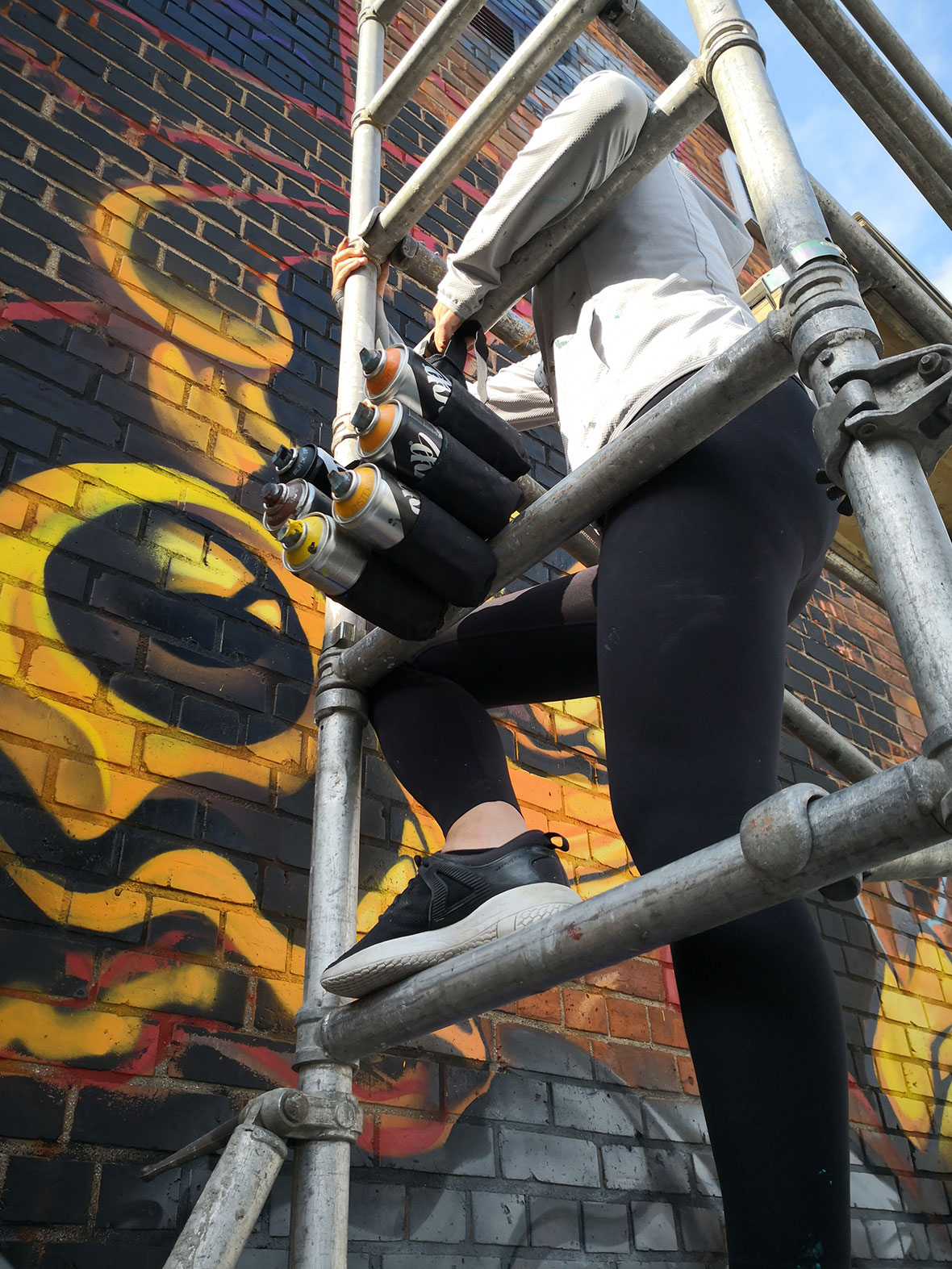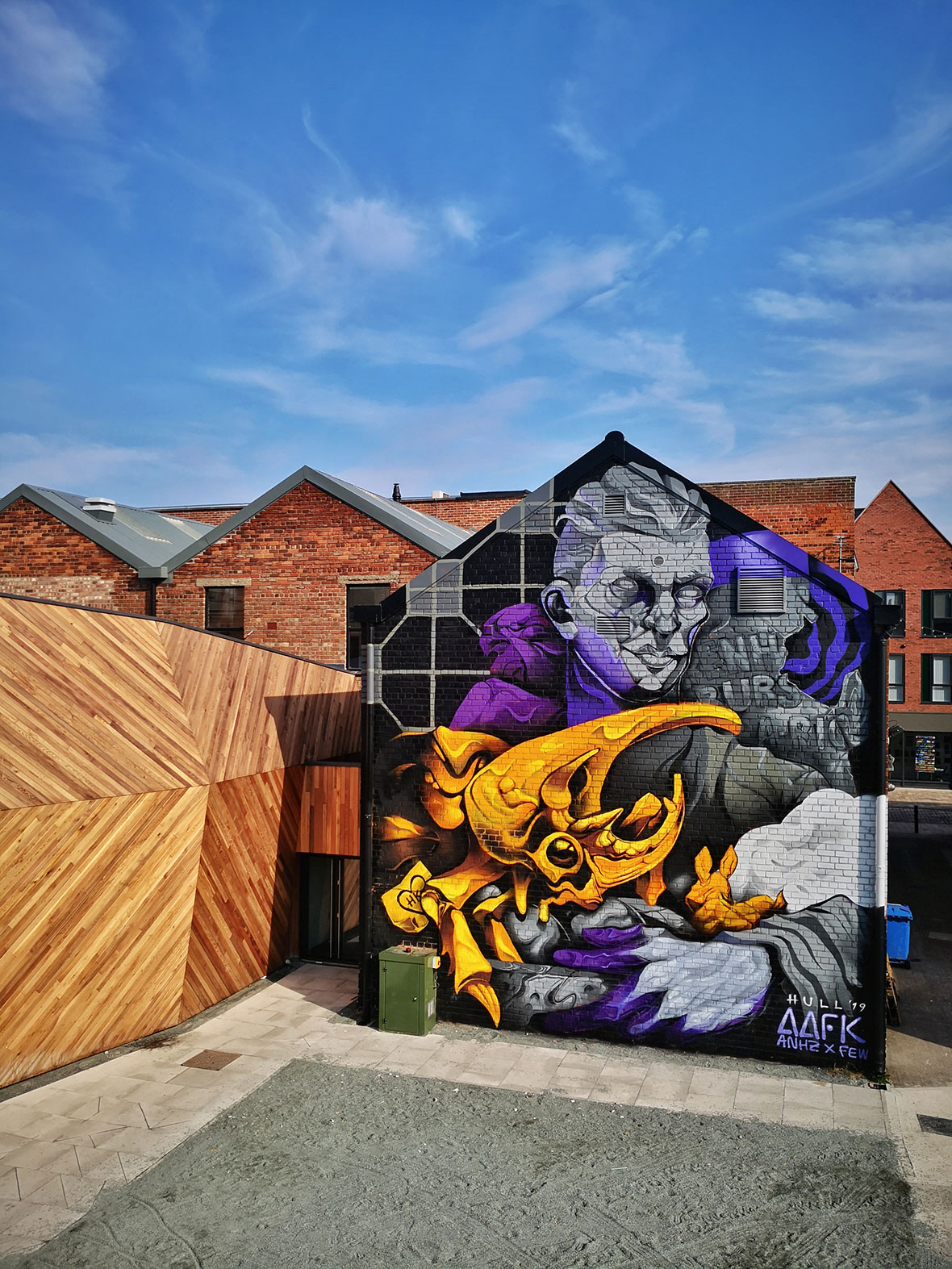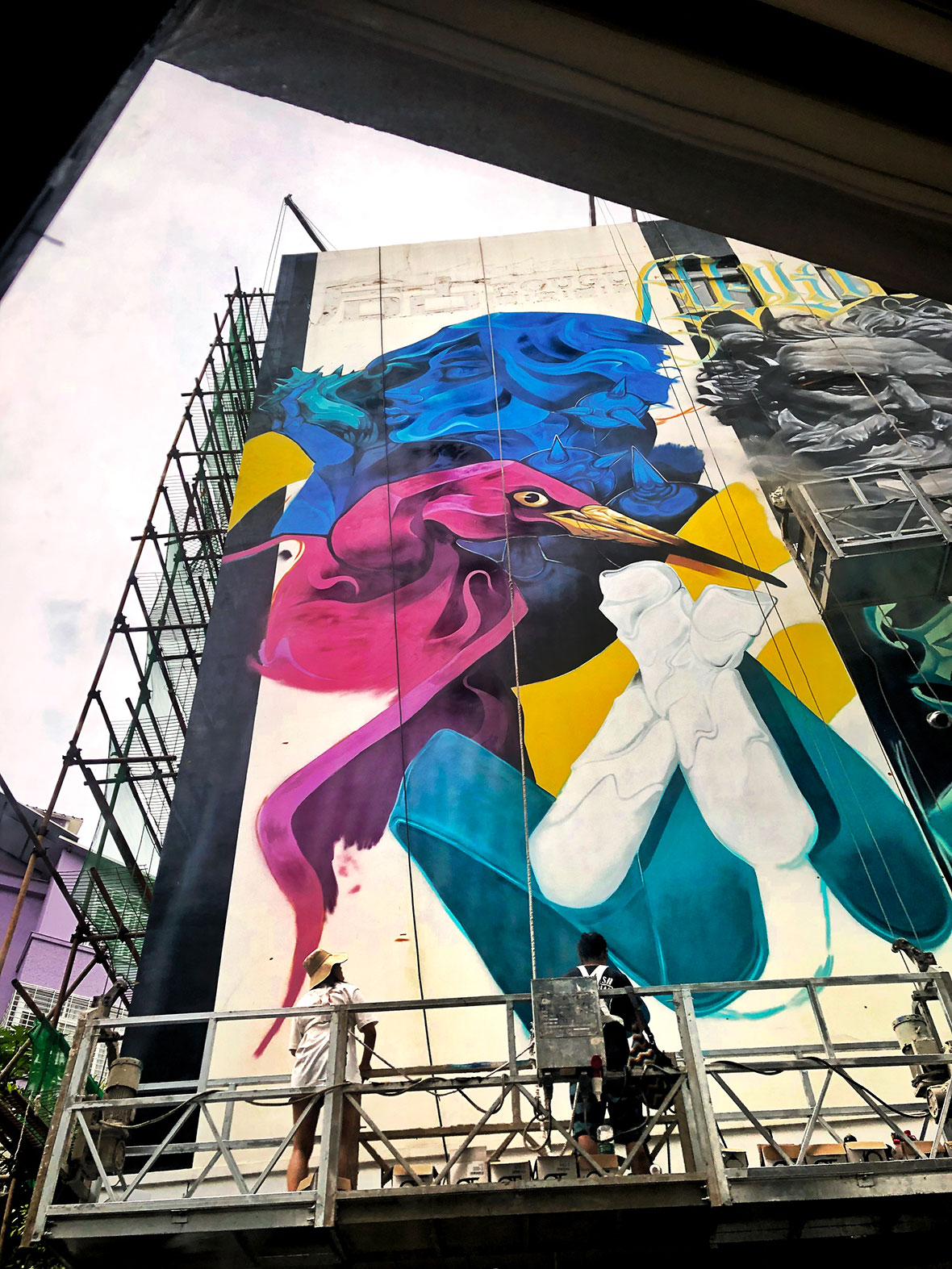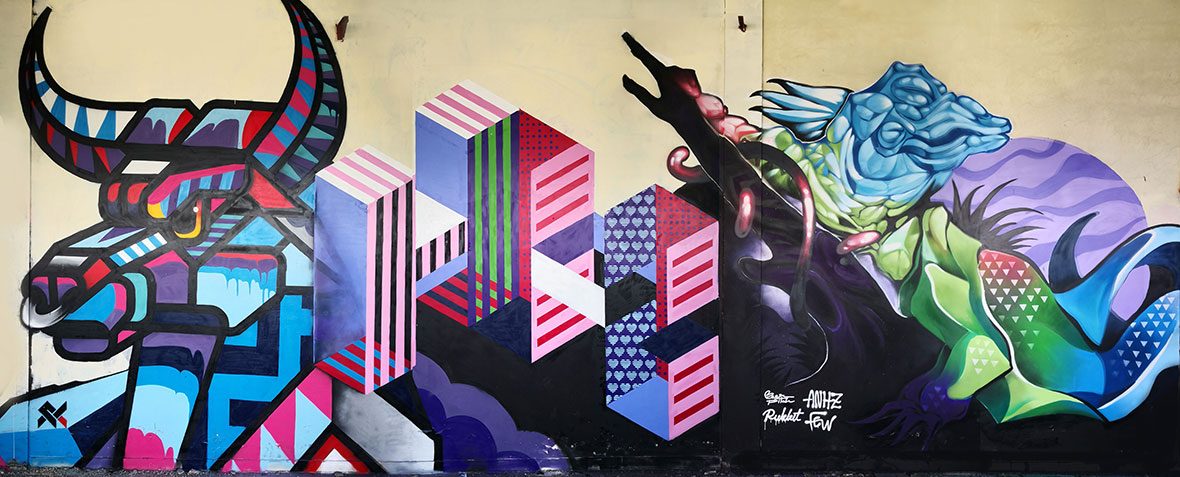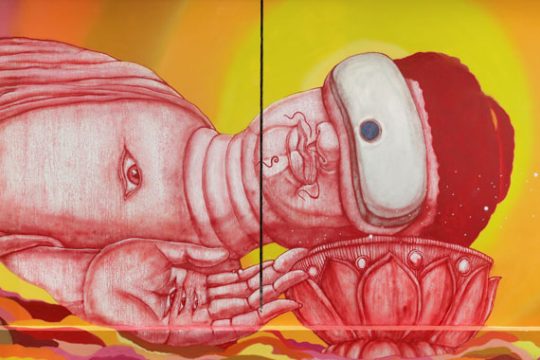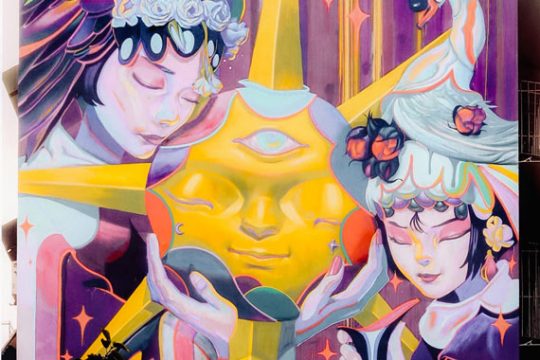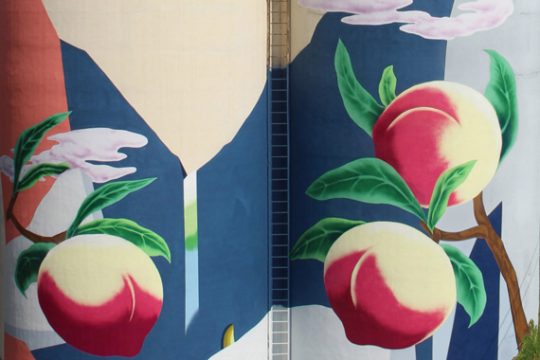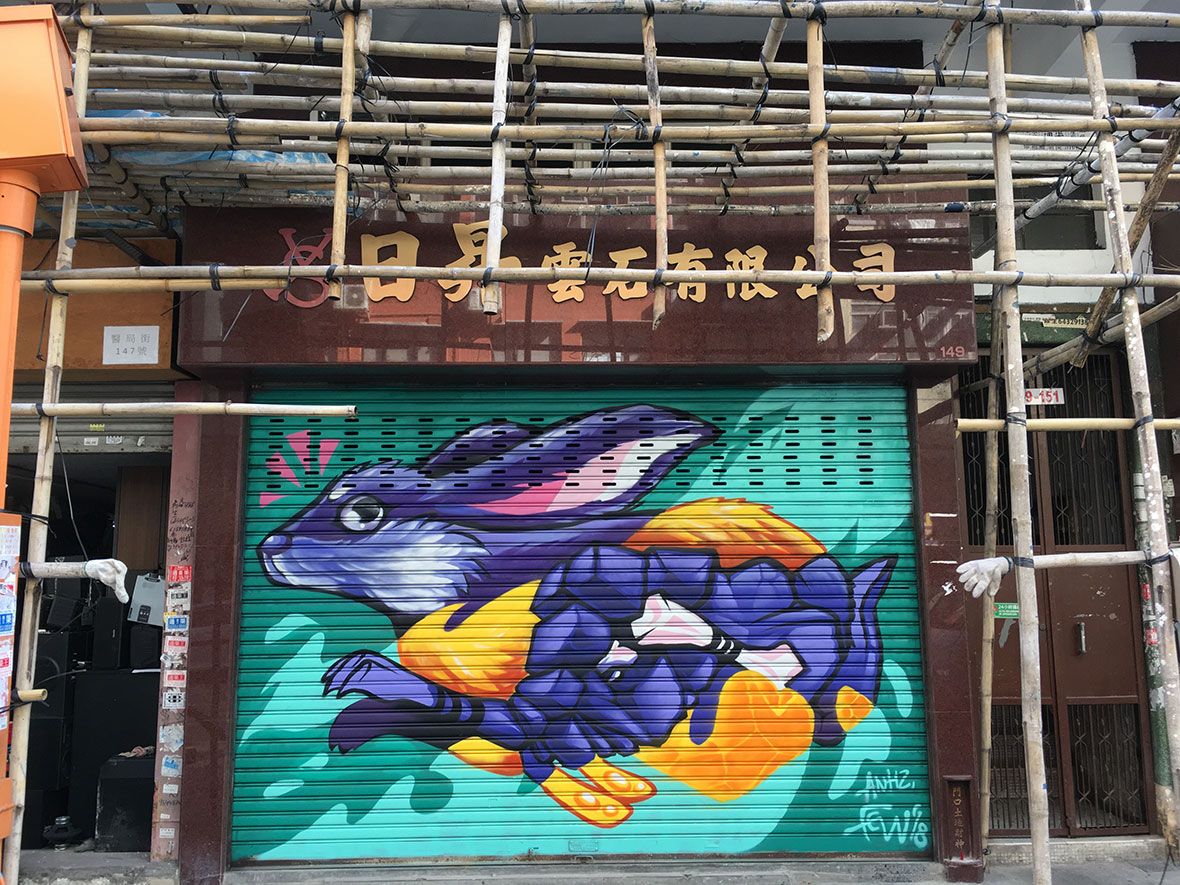
Creating art can often be a private affair, with an artist dedicating themselves to their work in the solitude of their own home or studio. Mural art, on the other hand, forces them into the public eye, where they need to interact with others face to face. This social element of street art was conflicting for ANHZ, the pseudonym of Chinese-Australian artist Anny Chong. It posed a hurdle when she first started, but as she’s grown more accomplished in the scene, it has motivated her to continue.
“When I was still studying in Melbourne, I met a lot of street artists and my friends asked me to go paint murals with them,” ANHZ says. “But I was too shy. It wasn’t until a few years later, after I moved to Hong Kong, that I made the jump. You can’t really hide while painting in public, so it forces you to open yourself up.”
大多数情况下,艺术创作是一件私人的事情,艺术家独自在家中或工作室里,专注投入到作品的创作中。但墙绘创作却截然相反。艺术家要进入公众的视野,与他人面对面互动。街头艺术的这一种社交元素对于澳籍华裔艺术家 Anny Chong(又名 ANHZ)是一种挑战,尤其是刚开始的时候。但是,随着她在墙绘创作方面越来越成熟,这反倒成为了激发她不断前进的动力。
“我在墨尔本上学的时候,遇到了很多街头艺术家,一些朋友会邀请我和他们一起去创作墙画。”ANHZ 说道,“但是我比较害羞,直到几年后,我移居香港,才鼓足了勇气。在公共场合画画没办法躲躲藏藏,所以就会逼着自己放开去画。”
ANHZ was born and partially raised in Macau, where she lived until she was 13. At the time, Australia was making an attempt to draw immigrants to the country in order to grow their workforce, so her mother moved them to Melbourne. “I’ve been drawing since I was little,” she recalls of her early years. “My mom used to take me to a lot of museums and art galleries and has a lot of artist friends. She used to dream of becoming an artist, so I’m living her dream!”
ANHZ 在澳门出生和成长,直到 13 岁移居澳大利亚。当时澳大利亚正试图吸引更多的移民,增加当地的劳动力,于是她的母亲带着他们搬到了墨尔本。 回忆起早年的生活,ANHZ 说:“我从小就开始画画。我妈以前常带我去博物馆和美术馆,还认识很多艺术家朋友。她以前梦想成为一名艺术家,现在我替她做到了!”
With the encouragement of her friends in Hong Kong, she and her partner Few started experimenting with street art in 2014, but they wouldn’t begin taking it seriously until 2016. The learning curve was a challenge: “Murals were tough at first because it’s a totally different thing,” she says. “You’re not in an air-conditioned room. You’re outside working in the Hong Kong heat. Learning to use the spray can took patience to reach a level where I felt comfortable. There were many times I got frustrated. My goal was to get half as good as the artists I looked up to.”
In the beginning, she sought out abandoned spots where she wouldn’t be disturbed by authorities or random stragglers and painted on a small scale. Now she prefers highly visible spots, goes big as possible, and is very deliberate with the walls she picks, seeking out interesting textures.
在香港的朋友鼓励下,她和搭档 Few 在 2014 年开始尝试街头艺术,但直到 2016 年,他们才开始认真投入到街头艺术创作中去。学习创作的过程是一个挑战:“刚开始墙上作画都很难,因为那是完全不同的领域——不是呆在空调房里创作,而要在香港炎热的户外画画。学习使用喷漆也花了我很长的时间,才有了游刃有余的感觉。有很多次我都感到很沮丧。我的目标是自己的作品能达到我敬佩的艺术家水平的一半就好了。”
一开始,她会特意找一些偏僻的角落,避开警察或路人,画的作品也比较小幅。而现在,她更喜欢在显眼的位置创作,画幅越大越好,也会精心挑选墙壁,寻找一些有趣的纹理。
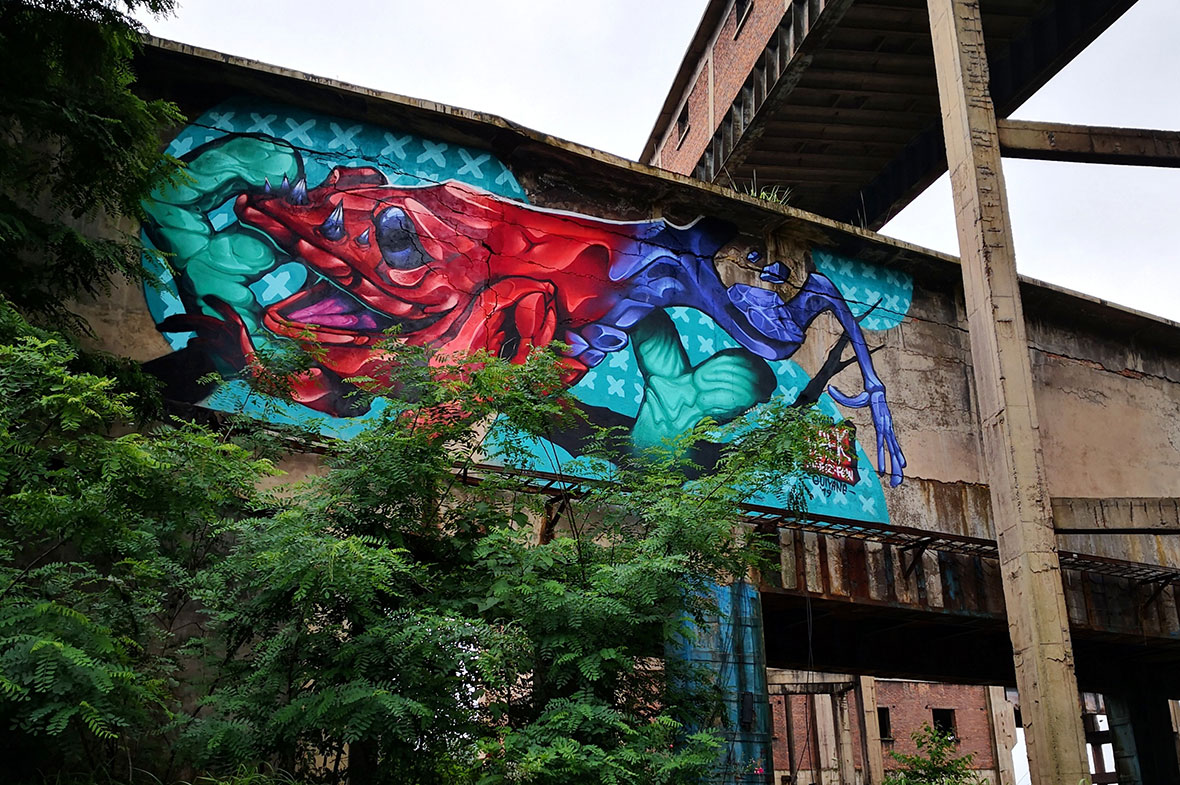
Phosphorescent-colored animals, whose features are folded into layers of texture like crumpled pieces of paper, have become a signature element of her murals. These works are a way for her to reflect on our relationship with the natural world. “I paint a lot of animals because I’m drawn to their forms; I’m attracted to curves which human subjects sometimes lack,” ANHZ says. “It’s also about a connection to nature. We’re living in a very urban setting and we tend to forget about the natural world. ”
萤光色动物图案,像是用摺皱的纸折叠而成,这是她作品的标志性元素。这些作品体现了她对人类与自然关系的思考。“我喜欢画动物,因为我喜欢它们的轮廓曲线,尤其是一些人类所没有的轮廓。另外也想表达人与自然的联系。我们生活在城市中,往往会忘记还有自然世界。”
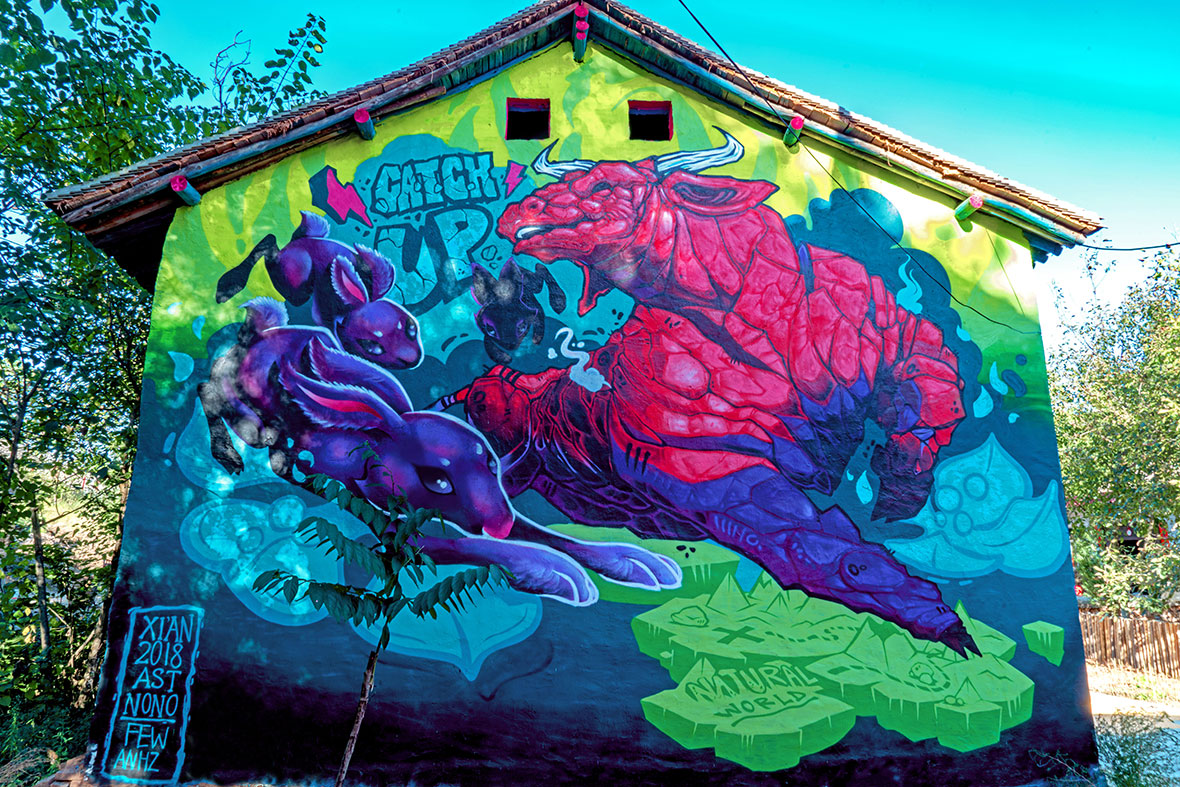
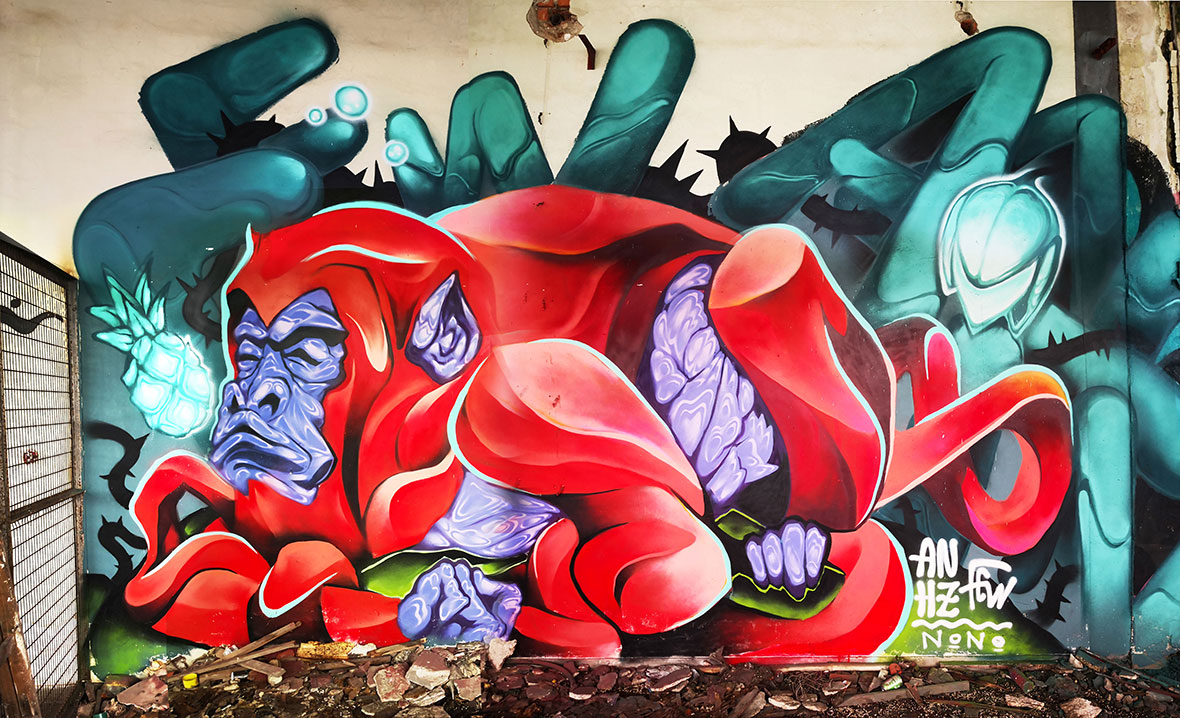
Aside from this fascination with animals and the natural world, her artistic growth has also been influenced by her cross-cultural experiences. Growing up in so many places was a challenge for AHNZ. “I went through an identity crisis. To put it bluntly, Australia isn’t the most tolerant country when it comes to minorities,” she explains. “I went through a phase where I wished I wasn’t Chinese or Asian. Like when I ate lunch at school I wanted a sandwich, not a rice dish. Even in Macau they gave preference to the Portuguese. So I wanted to be as Western as possible. But when I went to university, I finally learned to appreciate my roots.”
In Hong Kong, AHNZ met many others with cross-cultural backgrounds like herself, something she had never experienced before. While there’s a lot to identify with there, she sometimes still struggles to feel at home. “There’s always a clash going on, where some of the values from one side of my experiences are in conflict with the other,” she says. “Part of me feels separate from the culture here. Then I go to the West and I feel out of place in the other way.”
在她作为艺术家的成长过程中,除了对动物和自然界的着迷,她的跨文化经历也扮演了重要的角色。对于 AHNZ 来说,在不同城市生活和成长是一种挑战。“我经历过身份认同的问题。坦白讲,澳大利亚的社会对少数族裔并不是那么包容。”她解释说,“我曾经有一段时间希望自己不是中国人或亚洲人。譬如在学校吃午餐的时候,我会点三明治,而不是米饭。即使在澳门,葡萄牙裔也有着各种优待,所以我一直都想成为外国人。直到我上了大学,我才终于学会了接受自己的血脉。”
在香港,AHNZ 遇到了许多像她这样具有跨文化背景的人,这是她以前从未经历过的。虽然在这里有很多她所熟悉的生活,但她有时仍会有一种局外者的感觉。她说:“常常会有一些观念上的冲突,我遇到的一些价值观会与我曾经遇到的经历相互抵触。我感觉有一部分的自己与这里的文化格格不入,但是当我去到欧美国家,又会有另一种格格不入的感觉。”
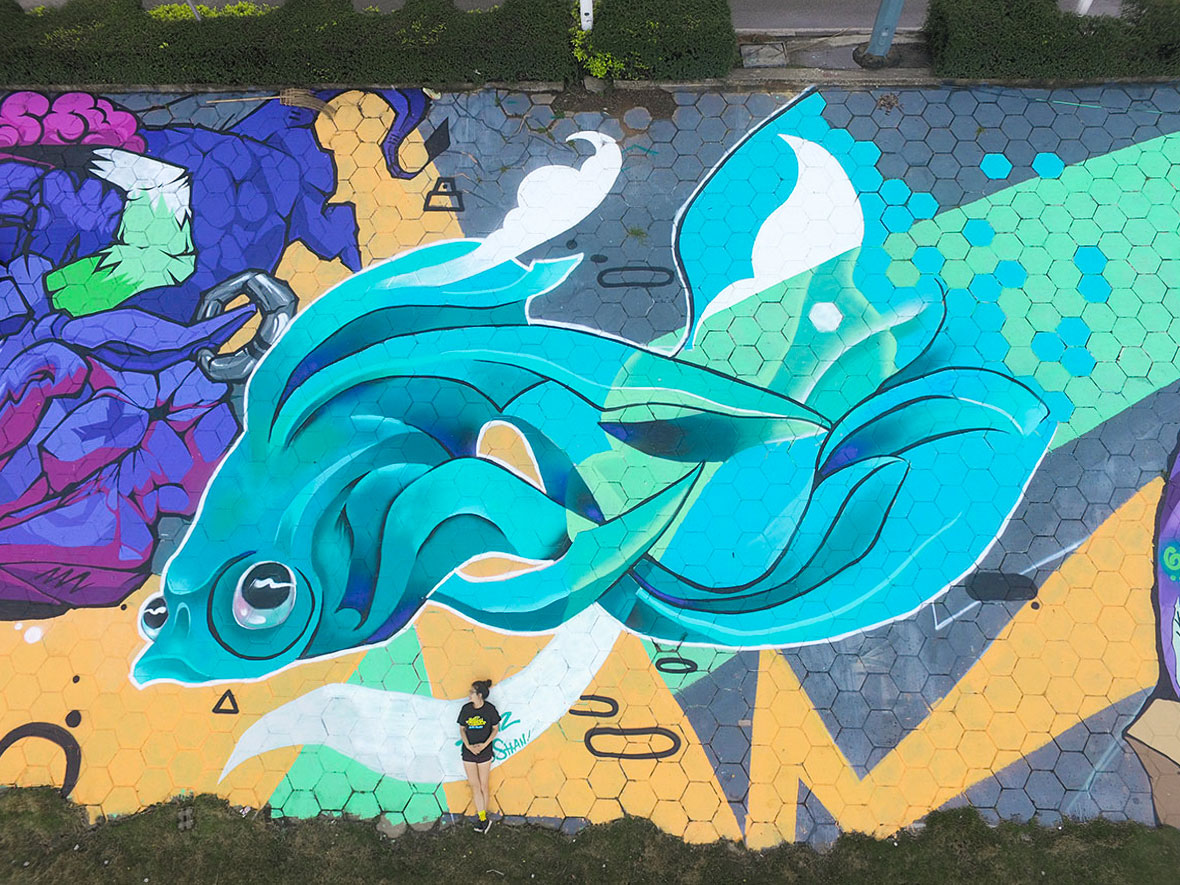
In both AHNZ’s solo works and her collaborative murals with Few (whose parents are from Hong Kong and Costa Rica), they often give nod to their multicultural backgrounds, though it’s done in subtle ways: “We’re trying to turn our artwork into a melting pot like we are ourselves,” says AHNZ. “We’ll introduce something like a Chinese story but told with our own style, which isn’t really Asian. And then we’ll also incorporate techniques that we’ve learned from our friends here, which adds another localized touch.”
无论是 AHNZ 的个人作品,或是她与 Few(他的父母分别来自香港和哥斯达黎加)的合作墙绘壁画,经常会运用到多元化的文化背景,但却是以一种微妙的方式出现。“我们尝试将自己的作品变成一个文化的大熔炉,正如我们自己一样。” AHNZ说,“我们想介绍一些关于中国的故事,不过是以我们这些不地道的亚洲人的角度来讲述。除此之外,我们还会结合从朋友那里学到的技巧,从而融入一些本地的元素。”
Like our stories? Follow us on Facebook and Instagram.
Instagram: @anhz.why
Contributor: Mike Steyels
Chinese Translation: Olivia Li

